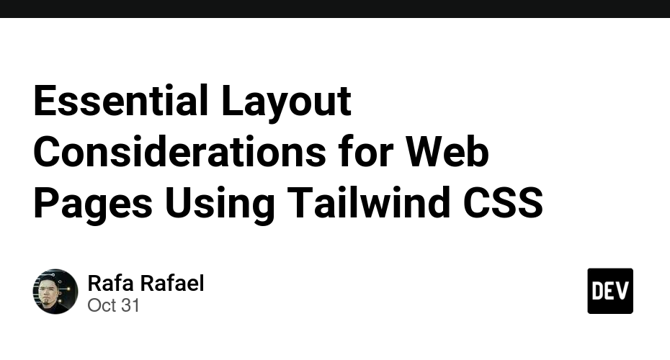Dev
2w
227

Image Credit: Dev
Essential Layout Considerations for Web Pages Using Tailwind CSS
- Laying out web pages involves important considerations to ensure design, usability, and maintenance of your project.
- To prevent multiple scrollbars, avoid nesting containers with overflow-scroll too deeply.
- Using a flexible layout with relative units and constraints can prevent layout breakage when sections dimensions change.
- To add a sticky section with Tailwind CSS, use sticky along with a defined top value. However, make sure the parent container is large enough to allow scrolling.
- Overlapping layouts can occur when elements have negative margins or when positioning is improperly used. Use Tailwind’s padding and margin utilities to avoid overlaps.
- Tailwind’s responsive utilities simplify designing responsive layouts based on screen sizes.
- Setting a fixed height can cause dynamic content overflow issues. Instead, opt for min-h or let the container grow with h-auto.
- Tailwind’s space-x and space-y utilities simplify spacing between items, avoiding manual margins and improve readability.
- Accessibility is essential. Use high-contrast colors, focus states, and ARIA labels to ensure all users can navigate and understand content.
- Whenever possible, use Flexbox or Grid for positioning instead of over-relying on absolute positioning.
Read Full Article
13 Likes
For uninterrupted reading, download the app